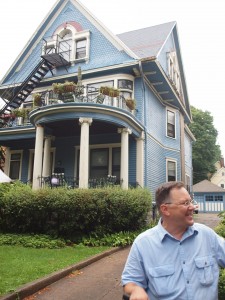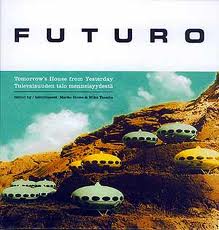
Sometimes the best use for a historic house IS as a house museum. Woodrow Wilson House, a National Trust Historic Site, in Washington, DC is a great example of a house museum.
Historic preservation can mean different things to different people. And that’s okay. I saw a video this week of a speech that a friend gave recently about historic preservation, and I was quite horrified. She was speaking to a group of attendees who were not necessarily preservationists and for some reason that escapes me she felt compelled to denigrate preservation’s heritage – and to make fun of historic house museums in order to make her point that community revitalization was what preservation is today, at least to her. And then she continued that preservation was no longer about saving individual buildings. What surprised me most was that the reason most people I know originally got into preservation was their desire to save a place that was important to them. The houses and buildings of Buffalo’s West Side made a huge impact on me every Sunday when we drove downtown to visit my grandmother and aunt. My aunt lived across the street from the National Historic Landmark Richardson complex (former Buffalo State Asylum for the Insane) and its brooding towers defined “architecture” for me. Finding a reuse for this place that had touched me viscerally is what made me a preservationist. Working to reinvent it in a way that revitalizes its community is what gives my career meaning now.
Let’s Not Forget Where Historic Preservation Came From
I don’t want to write a treatise on the history of historic preservation in the U.S. That can be found in many places. But I find myself getting distressed that we often make fun of the “little old ladies with tennis shoes”, as the women behind the preservation of Mt. Vernon or a myriad other historic sites are often called. Certainly, it may seem out of date today, and we often (myself included) make fun of the old white guy plantations. But this was where the historic preservation movement started in America, and that’s okay. We’ve all evolved since then, but forgetting how we saved some of our early landmarks doesn’t make historic preservation more valid today. Some places should be historic house museums and should have red velvet ropes to protect precious building fabric and furnishings. Some places can be more flexible and reused for conference centers or inns. Some places can continue to be used as they were originally designed. Historic preservation has become more inclusive – from diversity, architectural style and cultural standpoints. Just because it’s evolved though, doesn’t mean that we should ignore the preservation tool that saved so much of our early historic fabric (the house museum).
Saving a Neighborhood One Historic House At a Time

Architectural historian, Martin Wachadlo, discusses why he loves this colonial house in the Prospect HIll neighborhood of Buffalo.
With this in mind, I went on a tour of an embattled historic neighborhood in Buffalo this past weekend. A friend of mine, Buffalo’s rock star architectural historian and Preservation Buffalo Niagara tour guide, Martin Wachadlo invited me to his tour of Prospect Hill – an eclectic neighborhood that tells the story of the West Side of Buffalo. Also known as the Italian neighborhood, I was probably more interested in going because my grandmother’s house was in the neighborhood – that same house whose Sunday pasta dinners led us past the Richardson towers. I learned a lot of details that only someone as dedicated to the history of one place (Buffalo) as Martin is would know AND make intriguing! We visited the Silsbee-designed house that Frank Lloyd Wright may have worked on in his early years (Frank Lloyd Wright worked in his office), the mafia king’s house, and a multitude of Stick Style houses. We heard why Olmsted felt his Front Park had one of the best vistas of any park he had designed. We met families who had lived here for decades and young couples who were rescuing the neighborhood one house at a time. We heard about the decade-long battle by the residents to save their neighborhood from the un-needed expansion of the Peace Bridge. And we witnessed the devastation of the western half of the neighborhood by that same Peace Bridge Authority who has been buying up houses and relegating them to death by lack of maintenance. And in this one small neighborhood we were presented with at least ten different definitions of historic preservation. And what I observed in the 30 or so participants, was that different stories and buildings resonated differently with different people.
It’s All Just Semantics
It occurs to me what so many of us are looking for in our lives is some sort of authenticity. To some that means visiting the classic house museum. To others that means shopping on the classic main street. To some that means staying in a former prison that’s been converted into a luxury hotel. Many people would never even think they were “preservationists,” although they might like to do all of those things on their vacation. When I worked at the National Trust for Historic Preservation, we went through two re-branding efforts, each time starting out by saying we had to rename ourselves and our movement because “historic preservation” was seen as an elitist term. Well, we’re still called the “National Trust for Historic Preservation”! And I don’t think it’s the terminology as much as the people who are calling themselves “preservationists” that may be the issue.
There Are Two Types of Preservationists…

A friend of mine has been restoring a Futuro House, a 1968 sci-fi looking house. It might not be real sci-fi, but it is historic preservation.
A preservationist colleague of mine once said to me, “There are two types of preservationists – those who like sci-fi and those who don’t. And the real ones are those who like sci-fi!” I bring this up because the Sci-Fi Channel which recently rebranded itself as the “SyFy” Channel in an effort to draw new viewers who didn’t consider themselves sci-fi fans, is embattled on all fronts right now. They’ve alienated their long-time fans and have not drawn any new ones. They’ve cancelled three really fine true sci-fi shows – “Eureka”, “Caprica” and “Stargate Universe” and seem to be making more and more TV movies with names like “Frankenfish” and “Sharkapussy” targeted at teenage boys. The long time viewers are calling for the network’s demise so that a new network will step into the void and go back to calling sci-fi, sci-fi. I hope this doesn’t happen to “historic preservation”. Although it wouldn’t be quite so easy to rename it like “SyFy”, which no one seems to think was a good idea.
Next week I head to San Francisco for a new project I have preparing a sustainability management plan for a classic historic house museum. To me, this is one place where the future of preservation lies – a historic house museum (the Haas-Lilienthal House) which is embracing its heritage and meaning and spending the time and money to show that a house museum can be green. For this organization and house museum, the future of historic preservation means both house museum AND sustainability.
And if you’d like to “subscribe” or follow this blog, True Green Cities, please sign up through the “Subscribe” button at the bottom left of this page. You’ll receive a daily recap when new blogs are posted.
